Rare Biosphere
Jailene Gonzalez and Hannah Rappaport
Last updated on 2020-07-31
How We Chose Our Rare Bioshphere
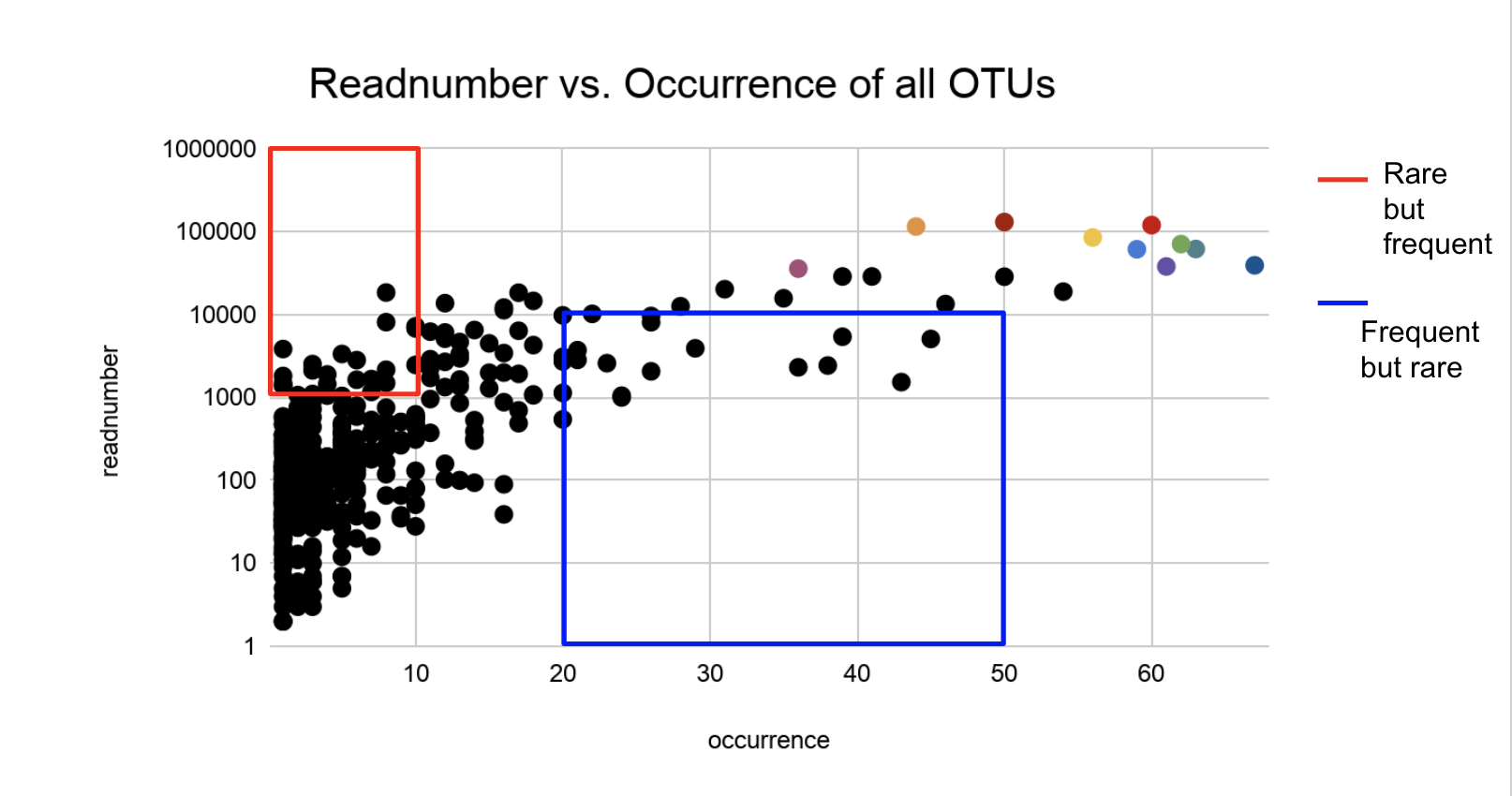
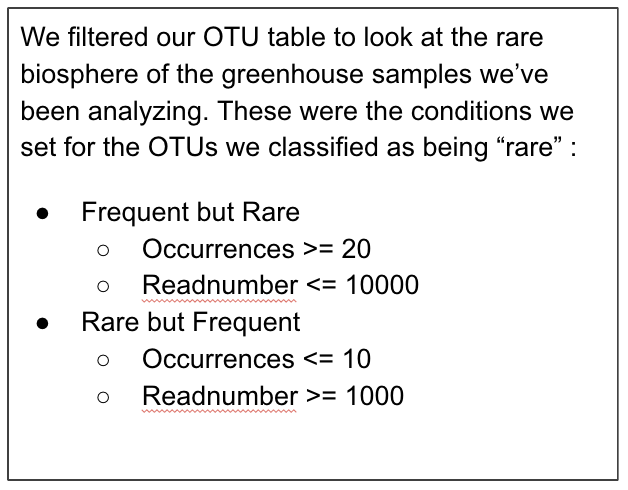
Frequent but Rare OTUs
Figure 1: SAR Composition of Frequent but Rare OTUs
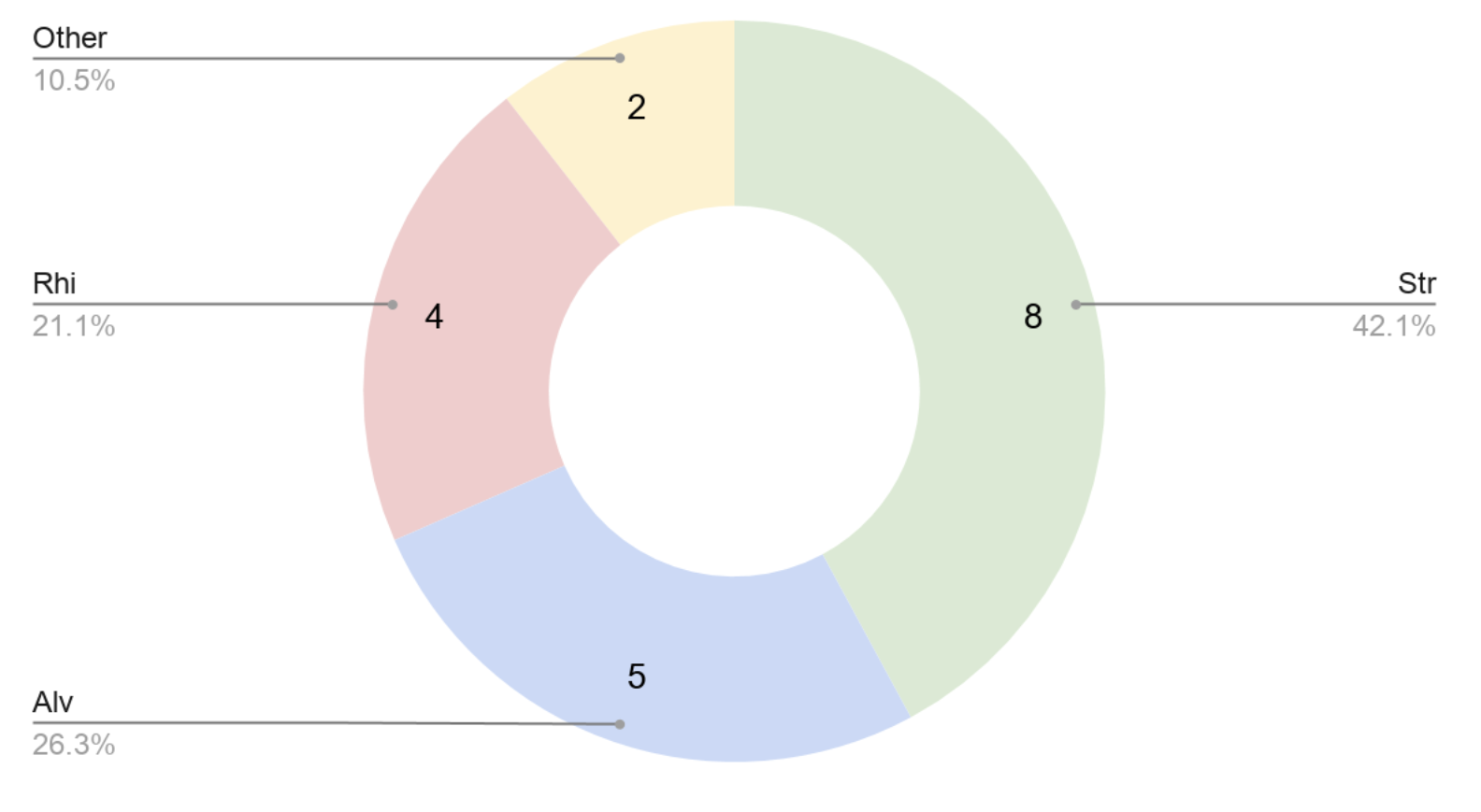
Figure 2: Readnumber vs Occurrence (Frequent but Rare)

Frequent but Rare OTU Table
## OTU Likely.organism SAR
## 1 OTU48 alga Str
## 2 OTU51 ciliate Alv
## 3 OTU77 testate amoeba Rhi
## 4 OTU114 cercozoan Rhi
## 5 OTU75 oomycetes Str
## 6 OTU73 diatom Str
## 7 OTU87 ciliate Alv
## 8 OTU94 ciliate Alv
## 9 OTU76 contaminant? Other
## 10 OTU105 contaminant? Other
## 11 OTU88 ciliate Alv
## 12 OTU143 cercozoan Rhi
## 13 OTU127 flagellate Str
## 14 OTU58 falgellate Str
## 15 OTU80 cercozoan Rhi
## 16 OTU150 ciliate Alv
## 17 OTU173 oomycete Str
## 18 OTU163 oomycete Str
## 19 OTU369 diatom StrRare but Frequent OTUs
Figure 1: SAR Composition of Rare but Frequent OTUs
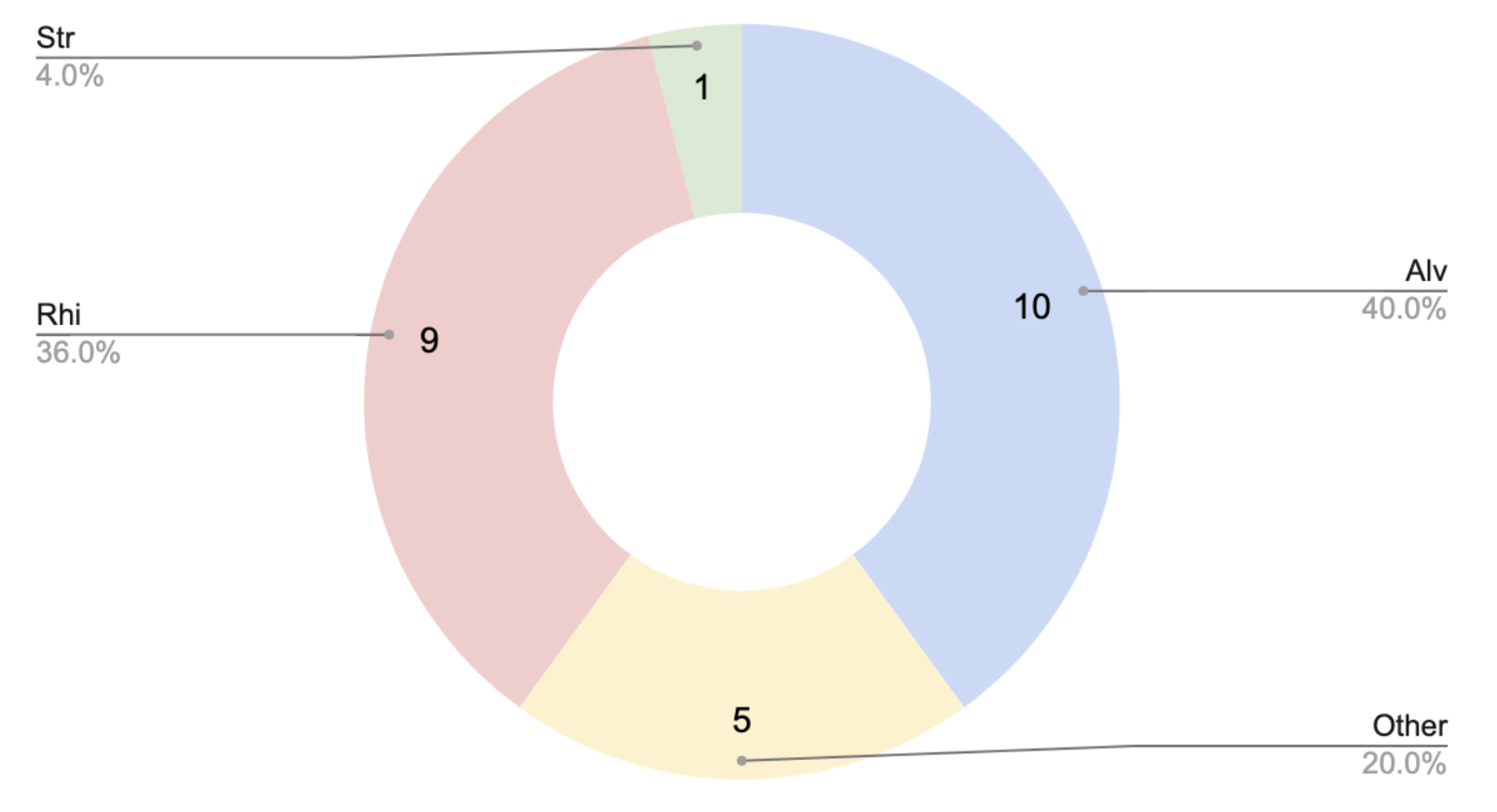
Figure 2: Readnumber vs Occurrence (Rare but Frequent)
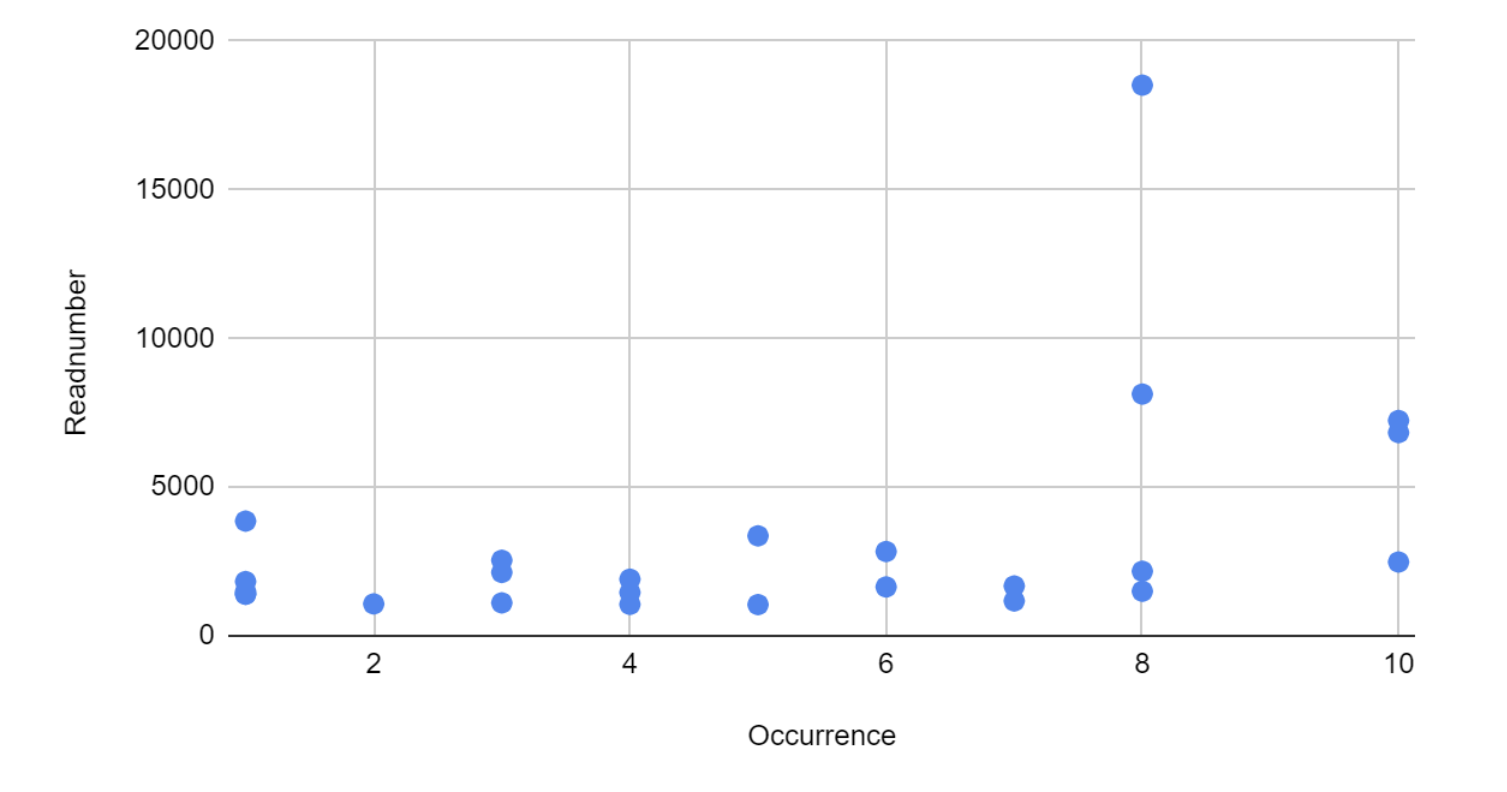
Rare but Frequent OTU Table
## OTU Likely.organism SAR
## 1 OTU118 Ciliate Alv
## 2 OTU136 Ciliate Alv
## 3 OTU63 contaminant? Other
## 4 OTU179 Ciliate Alv
## 5 OTU181 Heliozoan Rhi
## 6 OTU106 contaminant? Other
## 7 OTU52 Cercozoan Rhi
## 8 OTU74 Cercozoan Rhi
## 9 OTU237 Ciliate Alv
## 10 OTU113 Ciliate Alv
## 11 OTU177 Testate Amoeba Rhi
## 12 OTU165 Golden Algae Str
## 13 OTU99 Euglyphid Rhi
## 14 OTU104 Cercozoan Rhi
## 15 OTU92 Ciliate Alv
## 16 OTU123 Ciliate Alv
## 17 OTU164 Ciliate Alv
## 18 OTU157 Ciliate Alv
## 19 OTU43 Testate Amoeba Rhi
## 20 OTU45 Flagellate Rhi
## 21 OTU128 Ciliate Alv
## 22 OTU221 contaminant? Other
## 23 OTU78 Cercozoan Rhi
## 24 OTU47 contaminant? Other
## 25 OTU130 contaminant? OtherDiversity Indices/Rarefaction Curves
Figure 1: Rarefaction Curve of Observed OTUs

Figure 2: Richness Plot of Observed OTUs
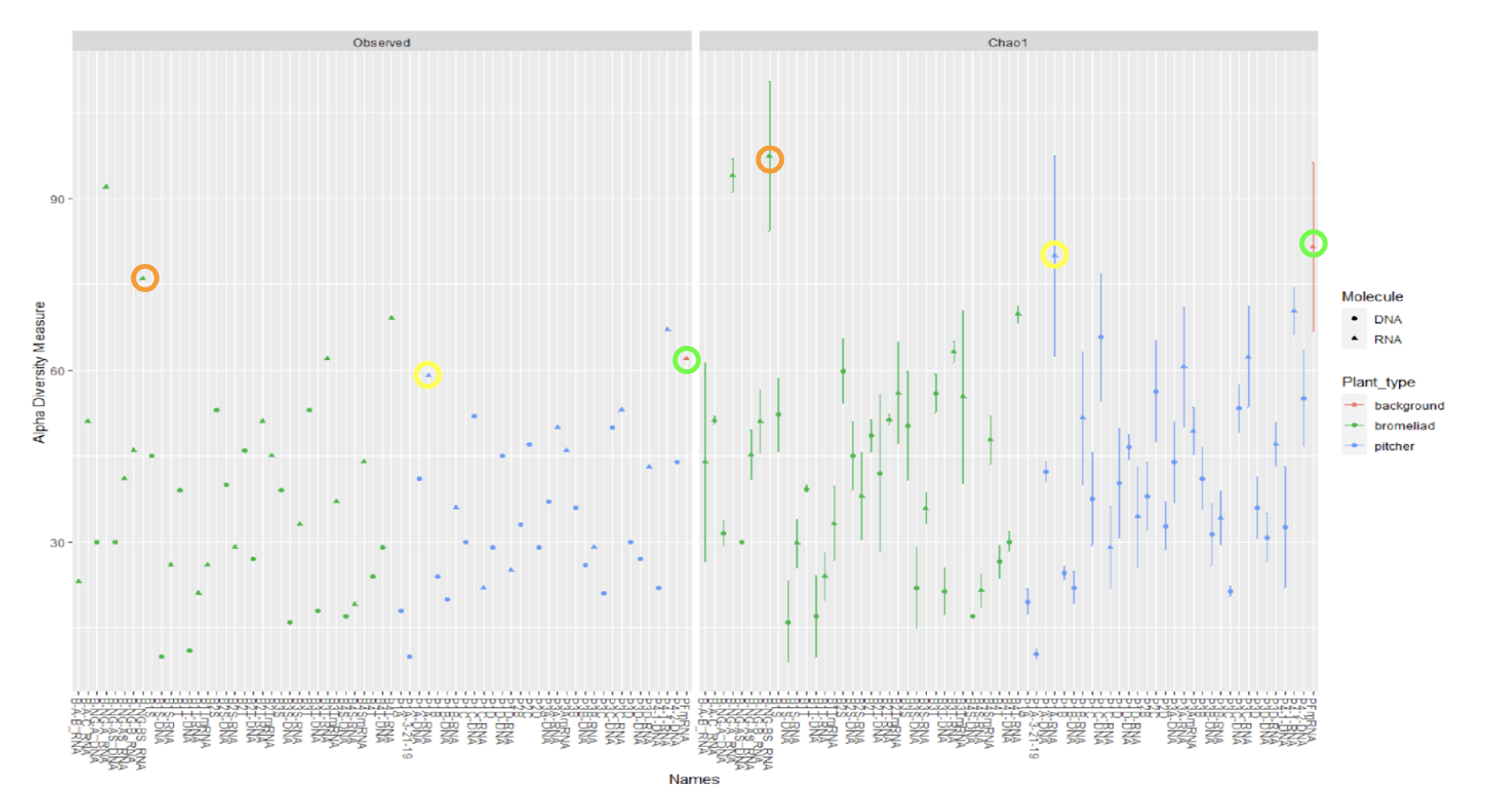
plot_richness(merged_physeq, x = "Names", color = "Plant_type", shape = "Molecule",
title = NULL, scales = "fix", nrow = 1, shsi = NULL,
measures = c("Observed", "Chao1"), sortby = NULL)